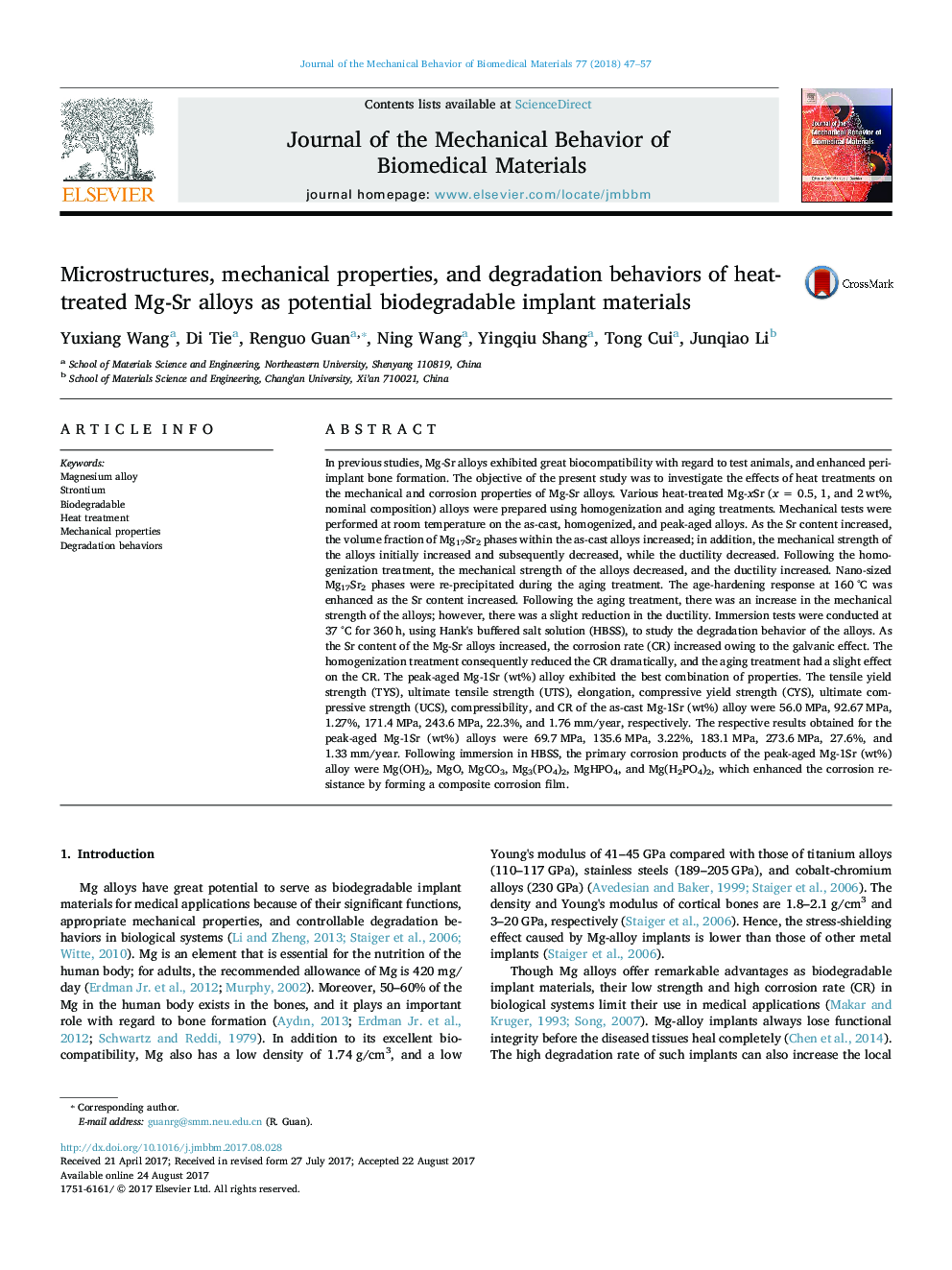| Article ID | Journal | Published Year | Pages | File Type |
|---|---|---|---|---|
| 5020344 | Journal of the Mechanical Behavior of Biomedical Materials | 2018 | 11 Pages |
â¢Homogenization treatment and aging treatment are executed on Mg-Sr alloys.â¢The heat treatments change the mechanical and corrosion properties of the alloys.â¢The evolution of the microstructures during the heat treatments is observed.â¢The influence mechanism of the microstructures on properties is investigated.â¢Nona sized Mg17Sr2 phases precipitate during the aging treatment.
In previous studies, Mg-Sr alloys exhibited great biocompatibility with regard to test animals, and enhanced peri-implant bone formation. The objective of the present study was to investigate the effects of heat treatments on the mechanical and corrosion properties of Mg-Sr alloys. Various heat-treated Mg-xSr (x = 0.5, 1, and 2 wt%, nominal composition) alloys were prepared using homogenization and aging treatments. Mechanical tests were performed at room temperature on the as-cast, homogenized, and peak-aged alloys. As the Sr content increased, the volume fraction of Mg17Sr2 phases within the as-cast alloys increased; in addition, the mechanical strength of the alloys initially increased and subsequently decreased, while the ductility decreased. Following the homogenization treatment, the mechanical strength of the alloys decreased, and the ductility increased. Nano-sized Mg17Sr2 phases were re-precipitated during the aging treatment. The age-hardening response at 160 °C was enhanced as the Sr content increased. Following the aging treatment, there was an increase in the mechanical strength of the alloys; however, there was a slight reduction in the ductility. Immersion tests were conducted at 37 °C for 360 h, using Hank's buffered salt solution (HBSS), to study the degradation behavior of the alloys. As the Sr content of the Mg-Sr alloys increased, the corrosion rate (CR) increased owing to the galvanic effect. The homogenization treatment consequently reduced the CR dramatically, and the aging treatment had a slight effect on the CR. The peak-aged Mg-1Sr (wt%) alloy exhibited the best combination of properties. The tensile yield strength (TYS), ultimate tensile strength (UTS), elongation, compressive yield strength (CYS), ultimate compressive strength (UCS), compressibility, and CR of the as-cast Mg-1Sr (wt%) alloy were 56.0 MPa, 92.67 MPa, 1.27%, 171.4 MPa, 243.6 MPa, 22.3%, and 1.76 mm/year, respectively. The respective results obtained for the peak-aged Mg-1Sr (wt%) alloys were 69.7 MPa, 135.6 MPa, 3.22%, 183.1 MPa, 273.6 MPa, 27.6%, and 1.33 mm/year. Following immersion in HBSS, the primary corrosion products of the peak-aged Mg-1Sr (wt%) alloy were Mg(OH)2, MgO, MgCO3, Mg3(PO4)2, MgHPO4, and Mg(H2PO4)2, which enhanced the corrosion resistance by forming a composite corrosion film.
Graphical abstractDownload high-res image (346KB)Download full-size image
